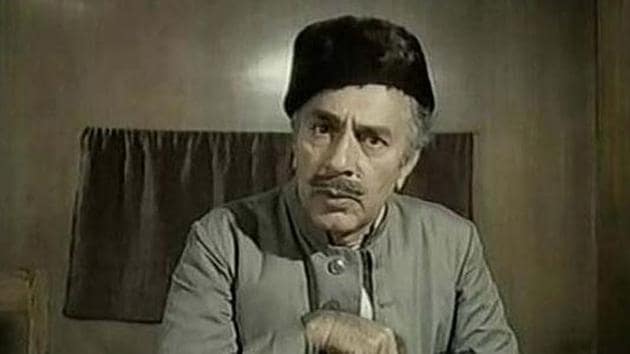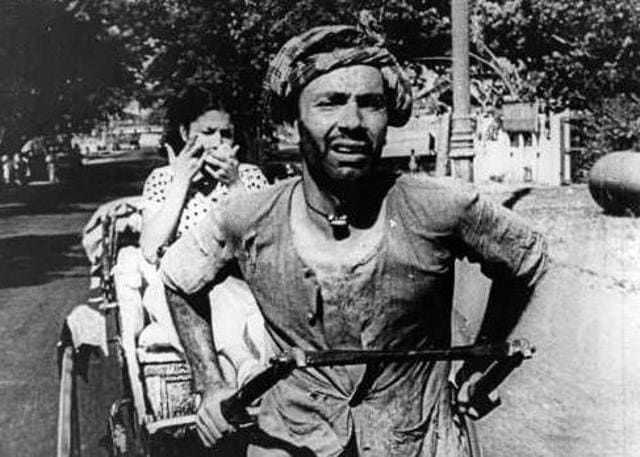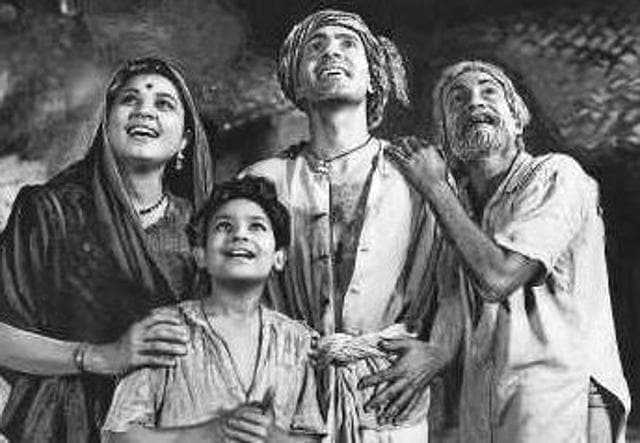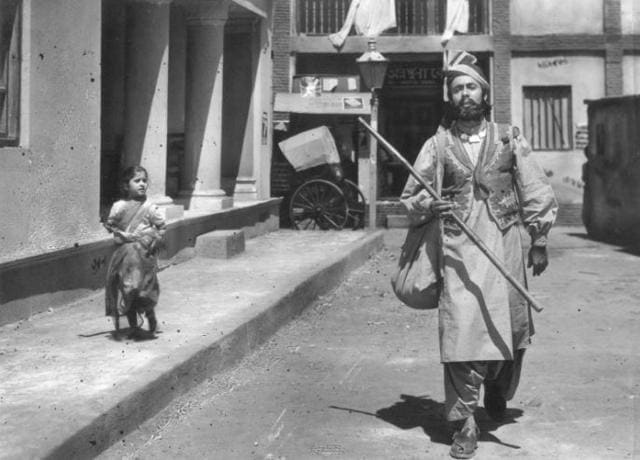Balraj Sahni birth anniversary: A gentleman actor millennials might not even have heard of
Balraj Sahni would have turned 106 on May 1 had he been alive. On his birth anniversary, here’s a look at the life and times of one of the legends of Indian screen.
Once upon a time, in the golden era of Indian cinema, there lived an actor, who was the crown prince of the times. His name was Balraj Sahni. The name may not ring a bell for the millennials, but to anyone with even an iota of interest in Bollywood, Balraj’s name is uttered with reverence. On his 106th birth anniversary, a tribute to one of the legends of Indian screen.

Born Yudhishthir Sahni (May 1, 1913) in Rawalpindi in modern-day Pakistan, he is the father of actor Parikshit Sahni (last seen in Salman Khan’s Sultan) and the elder brother of famous Punjabi writer and intellectual Bhisham Sahni, best known for his work Tamas (Darkness) on India’s Partition in 1947.
Balraj worked during the era of Dilip Kumar, Raj Kapoor and Dev Anand, each known for their distinct styles of acting. Yet Balraj was a class apart and a shining example of the natural school of acting. Who can forget his performance in 1965’s song, Oh Meri Zohra Jabeen, from the film Waqt?
Balraj’s acting was influenced by his political leanings. He remained a committed leftist all his life. His most famous works were with directors with similar leanings. He is best remembered for his work in films like Bimal Roy’s Do Bigha Zameen (1953), Amiya Chakraborty’s Seema (1955), Kabuliwala (1961), based on Rabindranath Tagore’s famous short story of the same name and MS Sathyu’s directorial Garam Hawa (1973), scripted by poet-lyricist Kaifi Azmi. He was a member of Indian Peoples’ Theatre Association (IPTA), as were many of his contemporaries. It shouldn’t come as a surprise that his most of iconic roles are about the underdog and the under privileged. His roles aren’t romantic ones; however, he proved early on that the protagonist of a story could be a father, a middle aged man and yet stand out.
Also read | Balraj Sahni: Man of myriad roles
Balraj is perhaps one of the few well educated actors in Bollywood and hailed from a well-off Punjabi-speaking family of pre-Partition India. He got a masters degree in English Literature and taught at Tagore’s Vishva Bharti University, Shanti Niketan in the late 1930s. During the war years, he was in London, working with BBC in its Hindi broadcast service.

He had always been keen on acting and on his return to India, joined IPTA and his first film was Dharti Ke Lal (1946), directed by KA Abbas. He starred in several films after that film. However, he had to wait for Bimal Ray’s iconic Do Bigha Zameen to arrive in 1953 before recognition came his way. The film, which tells the story of an impoverished and landless farmer who travels to Kolkata in search for work, becomes a hand-pulled rickshaw puller in the proverbial City of Joy, has become an icon of Nehruvian India. The film is based on Rabindranath Tagore’s Bengali poem Dui Bigha Jomi, replete with socialist themes.

The iconic scene, where one of his customers tempts Balraj’s character Shambu with money and asks to run fast and chase another rickshaw with his girlfriend in it, used to be aired often on television in the years gone by. It reflects class barriers and lack of empathy in Indian society. The film went on to win laurels across the world including an international acclaim at Cannes Film Festival and reportedly made money as well. For the film, Balraj practised pulling a rickshaw for a week, it is said. For a card-holding member of CPI, imagine his disappointment when Russian leader and communist icon Stalin wasn’t impressed by the film. According to a report in Tribune India, Stalin was shown the film in 1955 in Moscow. Not impressed, he reportedly called it a “pseudo socialist documentary”.

Nonetheless, the film is best remembered for its humanism, its championing the cause of the underdog and its remarkable neo-realistic style of cinema, reminiscent of the works of European masters like Vittorio De Sica. Reportedly, Bimal Roy was influenced by Italian neo-realistic cinema and yet the film used Indian cinematic devices like songs very effectively. If you haven’t heard Manna Dey’s song Dharti Kahe Pukar Ke, you have missed out on one of best-loved songs of its era and definitely among the most remarkable songs in Indian cinema.
His next most celebrated work was based on a famous story by Tagore called Kabuliwala. The heart-warming film deals with the unlikely friendship between a child, daughter of an affluent Bengali zamindar and a burly Afghan dry fruits seller from Kabul. Balraj’s warmth, his tenderness as a father figure to young Mini and little girl reciprocating his warmth with her innocence, left everyone teary-eyed. The film is remembered to this day and while there have been many remakes of this story, the most recent being Danny Dengzongpa’s Bioscopewala, Bajraj’s Kabuliwala remains a benchmark.
His next film that figures among the most powerful cinematic experiences in the country is MS Sathyu directed Garam Hawa. Based on a short story by Ismat Chugtai and jointly scripted by Kaifi Azmi and Shama Zaidi, the film documents the life on an aging Muslim gentleman, head of a large family, who stoically refuses to leave for Pakistan, even when matters turn grave in India. Balraj’s restrained performance is the highlight of the film. As a man conflicted by the situation he finds his family in, Balraj is said to have delivered the performance of his life. Unfortunately he passed away in April 1973 before the film released. Reportedly, the last lines he dubbed for the film were: Insaan kab tak akele jee sakta hai (how long can a man live in isolation).
In the meanwhile, Balraj’s activism continued all through his years of cinematic success. However, he had a fall out with his party for his support for Prime Minister Indira Gandhi during the Bangladesh Liberation War in 1971. He had been depressed during this period over the untimely demise of his daughter Shabnam as well. As per the Tribune India report, he died of a massive cardiac arrest in Mumbai with Karl Marx’s Das Kapital under his pillow.
Follow @htshowbiz for more
Get more updates from Bollywood, Taylor Swift, Hollywood, Music and Web Series along with Latest Entertainment News at Hindustan Times.
Get more updates from Bollywood, Taylor Swift, Hollywood, Music and Web Series along with Latest Entertainment News at Hindustan Times.






